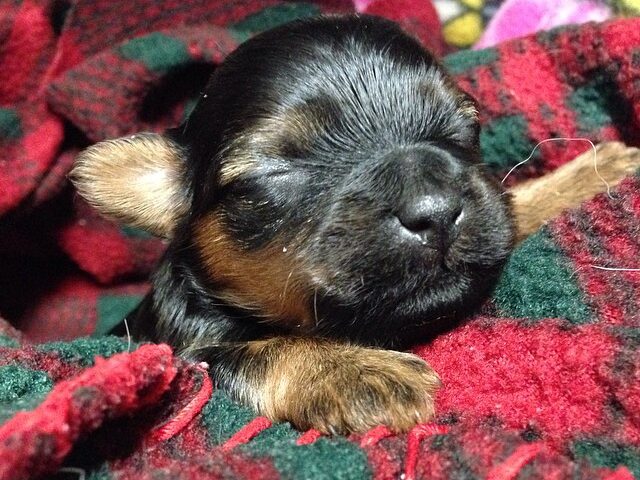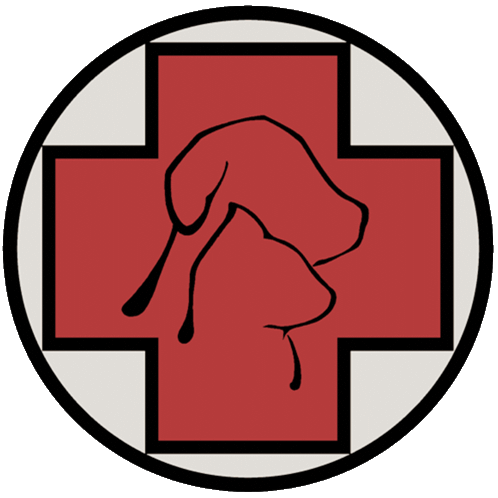Your pet has had a big day or two. We are humbled and appreciate the opportunity to serve your pets surgical needs.
Recovering from a Patella Luxation repair of a single or both knees is one of the most challenging for our pets. They do not always understand they need to be still and careful while their bones and tissues are healing. We have used surgical implants, such as pins and wires to stabilize your pets surgical repair to better align you pets knee caps. The goal is for your pet to regain reasonable use of the limb(s) as quick as possible to prevent joint stiffness and muscle loss. It is likely your pet will want to use the leg in a short few days, but it will not be complete healed for 12 weeks.
It is up to you and your family to keep your pet safe, confined, and assist them through this recovery. Excessive forces from rough play, running, jumping, falling, slipping on floors, or other activities can result in failure of the implants used to repair your pets knee. So, it is imperative you watch our pet closely to minimize the risk of damage and the potential need for additional surgery.
Though rare, complications do happen. Fortunately most are avoidable by close observation, as most complications are due to pet factors such as over activity, or licking and chewing at the surgical area. Complications can include, but are not limited to: infections, wounds opening up, sutures coming out, wires breaking, and pins breaking or backing out.
Though not completely healed for 12 weeks, at about 4-6 weeks after surgery, they will be allowed more activity and they are usually walking very well. As we recheck them, we will let you know what type of activity is allowed. As they are allowed more activity you will want to take it slowly, and if all goes well by 12 weeks they will be back to their normal routines. Typical Rehab recommendation are listed below.
If at any time you have concerns contact as soon as possible.
Successful healing depends greatly on your proper home care and rehab.
FACTS YOU SHOULD KNOW:
- Each pet is unique and how they respond and recover from anesthesia varies. In general we have dismissed your pet only after they are able to stand and walk out of the practice.
- Your pet will need to rest the first few days after surgery, so please watch them closely, but also give them their space so they can sleep and recover. It is normal for your pet to remain a little drowsy after going home.
- Young and active pets may come home and be very active and be their normal self. Please do your best to not encourage activity with no play, long walks, or other exercise.
- It may be 24-72 hours before your pet is back to their normal.
- Pets will often chew and lick and stitches, so if needed make sure your pet has an e-collar available in case you need it.
- Do NOT give Aspirin or Tylenol. These can cause excessive bleeding or be toxic to your pet. An additional safe and effective pain injection can be given at the time of discharge if the pet appears to be uncomfortable.
- Be sure to keep the pet WARM & DRY as they recover
- Three to four days after surgery it is not uncommon to see the pet’s ankle swell up in the leg(s) that had surgery. This is normal as fluid that build up from surgery moves down to the ankle, and n reason for concern. This will resolve in a short few days.
Diet
- Do NOT let your pet drink a large quantities of water at one time—or vomiting may occur. If no vomiting occurs by bedtime, leave water available to the pet during the night.
- Your pet can have their regular diet as soon as they get home. Anesthesia and abdominal surgery may cause nausea and vomiting if the pet is fed directly after surgery.
If Vomiting Occurs
- Withhold food and give Pepto Bismol at a dosage of one (1) teaspoon / 20 pounds. Call the hospital if vomiting continues into the next day. Give no food or treats by mouth as long as vomiting continues.
- Give only small amounts water at frequent intervals. Offer a few laps every 15‑30 minutes for the first 6 hours.
Activity
- Keep totally confined in a crate when not being observed.
- Restrict exercise. No running, jumping, or climbing stairs for 10-14 days. Take out to potty or use stairs on a leash only.
- Exercise leg 2 ‑ 3 times daily to prevent stiffness.
- Please restrain your pet when leaving the clinic by using either a leash or a pet carrier, to prevent them from getting hurt or escaping.
- If swelling occurs massage the leg gently several times daily to improve circulation.
- Medications administered following surgery may cause them to be sleepy. Keep your pet in a protected environment so that she stays warm and does not get hurt.
- Your pet can go back to leash walks in a few days, for the next 12 weeks, or until instructed otherwise your pet should not be allowed to be off leash. Even in a fenced yard. We do not want them to suddenly chase any wildlife or play, as it could cause damage to the surgical repair.
- Follow Physical therapy guides provided below.
Incision Care
- Watch any incisions for swelling, redness, or drainage. Apply nothing to the incision without our knowledge.
- Mild amount of bruising can be expected and is normal.
- Occasional dripping of blood or a blood tinged fluid is normal for first 24-48 hrs, but if it seems excessive please contact us.
- Prevent excessive licking, and keep her in an environment that will keep incisions clean.
- Return in 14 days for suture removal. There is no charge unless sedation is required.
Medications
- Give the pain medication prescribed as directed on the label.
- Give any antibiotics prescribed as directed on the label.
- Apply topical medication as directed.
- Use other medications prescribed as directed on the label.
Other General Instructions
- Our major concern is the comfort and healing of your pet. We will do everything possible to insure help them in their recovery ‑‑at the least expense to you. Please remember that pets does not understand‑‑and may cause self‑inflicted damage to itself. We will charge for any and all drugs and medications required for complications created by your pets activity.
- Purchase an Elizabethan collar if your pet licks the sutures excessively. If after hours, they can be found at the pet stores as well.
- Many pets will not have bowel movements for 1 ‑ 3 days after anesthesia. This is normal, provided she is acting normal otherwise.
- It is best you do not give your pet a bath till any sutures are removed. In the event they must be bathed, apply Vaseline or antibiotic ointment to the incisions and shower them. Do not submerge in a bath.
Recheck Exam
Return your pet for its free post operative recheck in 5-7 days, or sooner if instructed by our team. After that first recheck we will want to recheck them WEEKLY, until discontinued by one of our veterinarians, to ensure proper fracture healing is occurring. Sutures are typical removed at the second recheck exam.
Rehabilitation Following Knee Surgery
Your pet’s recovery following knee surgery may take about 12 weeks. Many factors will determine your pets recovery time. They should be closely observed and confined to the house, leash and crate for the first 10 weeks. They should not run, jump or have unobserved exercise during this period. Please follow the guidelines listed below. How much home rehabilitation your pet needs is very dependent on your pets willingness to use the leg that had surgery. Some pets will need more rehab than others.
If needed, weight loss will hasten recovery. Pain medications are recommended to provide pain management for the first 4-6 weeks following surgery refill these as needed. But, your pet will develop some level of arthritis in the effected joints, so its a good ideal to keep pain medication and/or anti-inflammatory on hand for those days they over do it, are rainly, or cold.
Week One
- Apply an ice pack to the knee 10-15 minutes four times a day for the first 24 to 36 hours following surgery. (An ice slurry can be made by mixing 2 parts isopropyl alcohol to one part water in a zip lock bag and freezing. This is kept in the freezer except when in use.) Use a towel between the skin and ice pack for comfort.
- When swelling and redness have resolved, begin application of a warm compress (a damp towel warmed in water) to the knee 10-15 minutes three times a day before performing 10 slow repetitions of gently flexing and extending the knee through a full range of motion.
- After the third day, begin slow leash walks of less than 10 minutes duration three times a day. Use the short leash walks outdoors to allow your dog to urinate and defecate.
Weeks Two – Three
- Apply the warm compress and continue flexion and extension of the knee as described in week one. Compress therapy may be discontinued when your dog begins using the limb.
- Increase slow leash walks to 10-20 minutes three times a day.
- At the end of week 2, the dog should be reexamined by your veterinarian for suture removal and evaluation of limb usage (range of motion, limb size and weight bearing).
Weeks Four – Five
- Increase the slow leash walks to 20-30 minutes 2 to 3 times a day.
- Have your dog circle from the right and left in a figure 8 direction 2 to 3 times a day.
- Have your dog sit and stand with the affected limb against a wall for 10-15 repetitions 2-3 times a day.
Weeks Six – Ten
- At the end of week 6, the dog should be reexamined by your veterinarian for evaluation of limb usage (range of motion, limb size and weight bearing).
- Increase the slow leash walks to 30-40 minutes a day. The pace should be slow enough to ensure full weight bearing of the affected limb.
- Have your dog slowly climb a flight of stairs 5-10 times twice a day.
Weeks Ten – Twelve
Healing should be complete and your dog should have returned to near full activity by the 12th week.
Notify the clinic if any of the following occur:
- Vomiting or Diarrhea after 24 hours.
- Refusal to eat after 48 hours.
- Any signs of discomfort or severe pain.
- Any evidence of significant bleeding from the incision.
- Continuous lick or pulling at the sutures. (Restraint Collar May Be Needed)
- Excessive swelling of the incision.
- The incision comes open.
- Loss of appetite or severe depression.
Contact Us With Any Other Concerns
Please call us with any questions or concerns you may have. Though spays typically are routine major surgeries and rarely have complications every pet is unique and any complications are better treated early, so the sooner you contact us with concerns the sooner we can intervene if needed.
Please feel free to contact us with any concerns or questions at
615-459-0806
or submit the form below
Thank You For Trusting Us With Your Pets Care!



